Summary of Climate Disasters on the Planet from August 14 to August 20, 2024
Turkey
Turkey continues to battle wildfires engulfing various regions of the country.
The third-largest city in Turkey, Izmir, and its surrounding provinces were severely affected.
A fire near Izmir broke out on August 15. Due to strong winds, the flames quickly spread to residential areas.
In Karşıyaka, one of the most developed and densely populated districts of Izmir, the fire was particularly devastating.
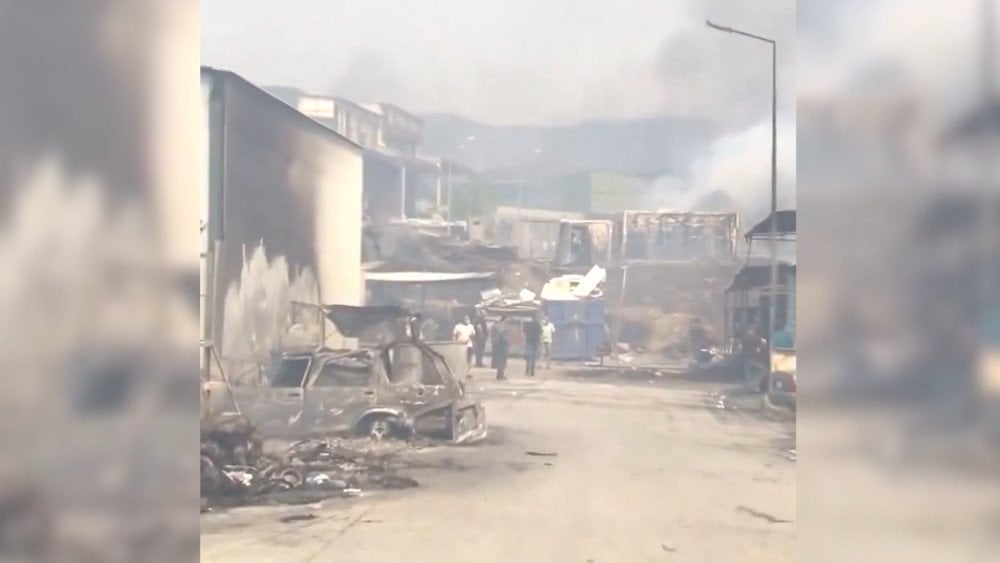
Aftermath of a wildfire in Izmir, Turkey
The fire raged in the city for 24 hours, damaging homes and dozens of shops in the industrial zone, and spreading to a multi-story residential building.
More than 4,000 people were evacuated to safety. As a result of the fire, 78 individuals were injured, with 29 of them hospitalized.
According to the Disaster and Emergency Management Authority (AFAD), a total of 247 wildfires of varying intensity were recorded in the country between August 15 and 18.
A massive amount of resources were deployed to combat them: 25,000 specialists, a large number of volunteers, 105 helicopters and planes, and 14 drones.
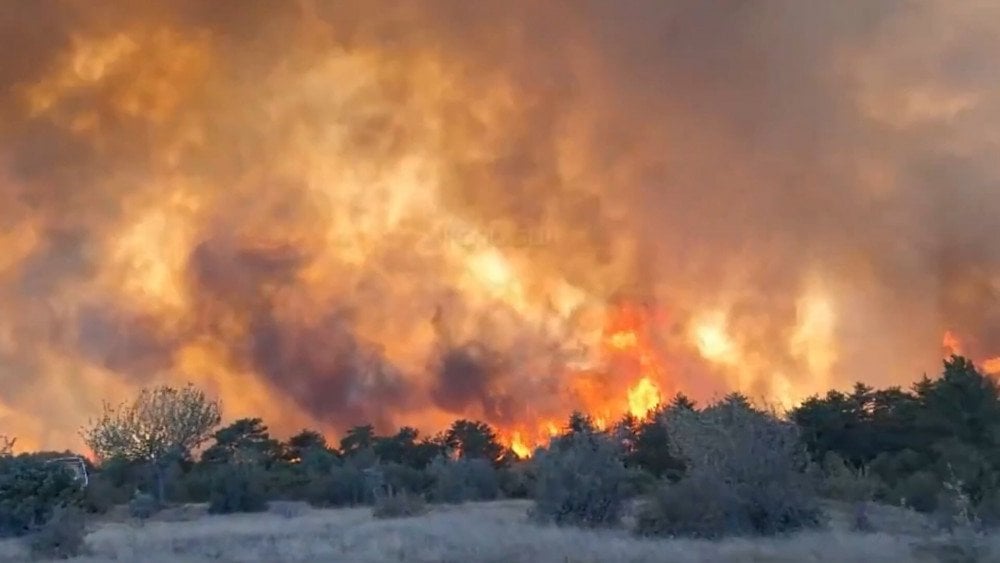
Wildfire flames engulf large areas, painting the sky orange, Turkey
A total of 4,700 people were evacuated across the country. In the provinces of Izmir, Manisa, and Aydın, the fire damaged 142 structures, some of which were completely burned down.
Tropical Storm Ernesto
On August 14, Tropical Storm Ernesto, a category 1 hurricane, hit Puerto Rico with heavy rains, flooding roads and leaving 120,000 people without water supply. In some areas, more than 250 mm (9.8 inches) of rainfall was recorded.
On the island of Puerto Rico, over half of all homes and businesses—about 750,000 buildings—were left without power.
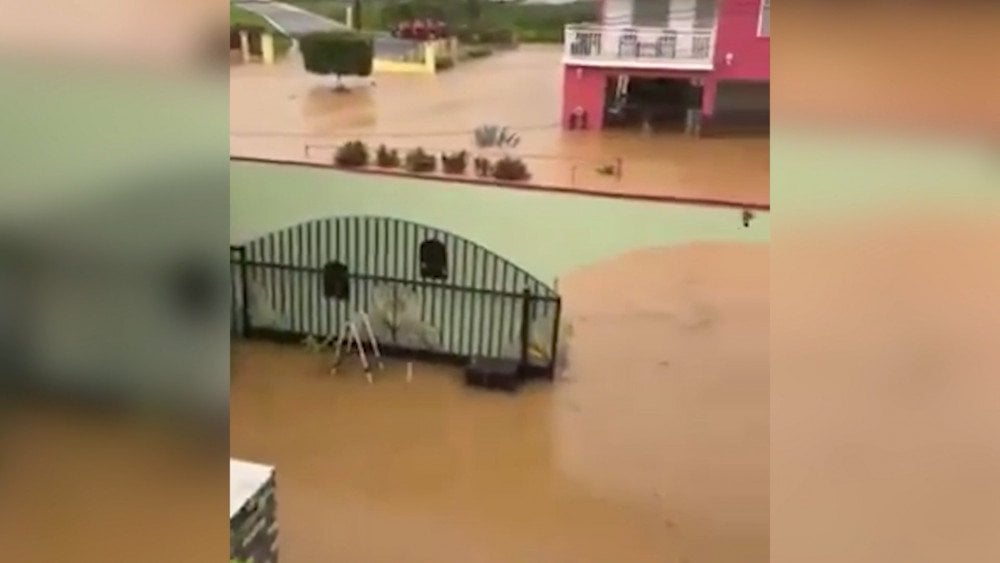
Severe flooding after Hurricane Ernesto in Puerto Rico
Strengthening to a category 2 storm Ernesto continued its destructive path, impacting Bermuda. Local residents faced wind gusts of up to 138 km/h (85 mph) and heavy rain.
On much of the Eastern Seaboard of the United States, Hurricane Ernesto caused flooding and life-threatening surf, resulting in the deaths of at least 3 people and sweeping a two-story house into the ocean.
USA
On August 18, extreme rains hit southwestern Connecticut, USA, with some areas receiving
up to 300 mm (11.8 inches) of rainfall.

Cars in water nearly to their roofs due to extreme rain in Connecticut, USA
The hardest-hit areas were Fairfield and New Haven counties, where rivers overflowed their banks and landslides occurred. According to the Emergency Management Office, roads and bridges were destroyed, and a major gas leak occurred.
In the town of Salisbury, 15 roads were completely closed due to flooding. A widespread power outage occurred.
The town of Oxford was hit by
intense rainfall—342.9 mm (13.5 inches)—
and an unprecedented flood.
As a result, 2 people died, and dozens were trapped by raging waters.

Unprecedented flood sweeps away a house in Oxford, USA
In the town of Monroe, powerful rains fell, the likes of which had not been seen in at least the past 200 years of observation. The town received 253.9 mm (10 inches) of rain.
Canada
On the morning of August 16, an EF1 tornado swept through the small town of Ayr in Ontario. Its path was over 5 km (3.1 miles) long, 230 m (755 feet) wide, with maximum wind speeds reaching around 165 km/h (102 mph).
The tornado overturned empty railcars, a truck with a trailer, severely damaged a store building and construction center, and left 3,000 people without power. The twister uprooted trees and shattered windows in homes.

Tornado overturns empty railcars in Ontario, Canada
Nepal
On August 16, a glacial lake outburst triggered a sudden overflow of the Thame River in Nepal. The water carried mud, gravel, and boulders down the slopes of the Himalayas into residential areas.
In the tourist village of Thame, located in Khumbu Pasang Lhamu Municipality, Solukhumbu District, Koshi Province, powerful mudflows destroyed roads, homes, hotels, a school, and a clinic. Nearly half of the village was destroyed, and the remaining part is uninhabitable. Mobile communication was disrupted.
More than 130 people were forced to leave their homes. As of August 20, 2024, one person is missing, and the search continues.
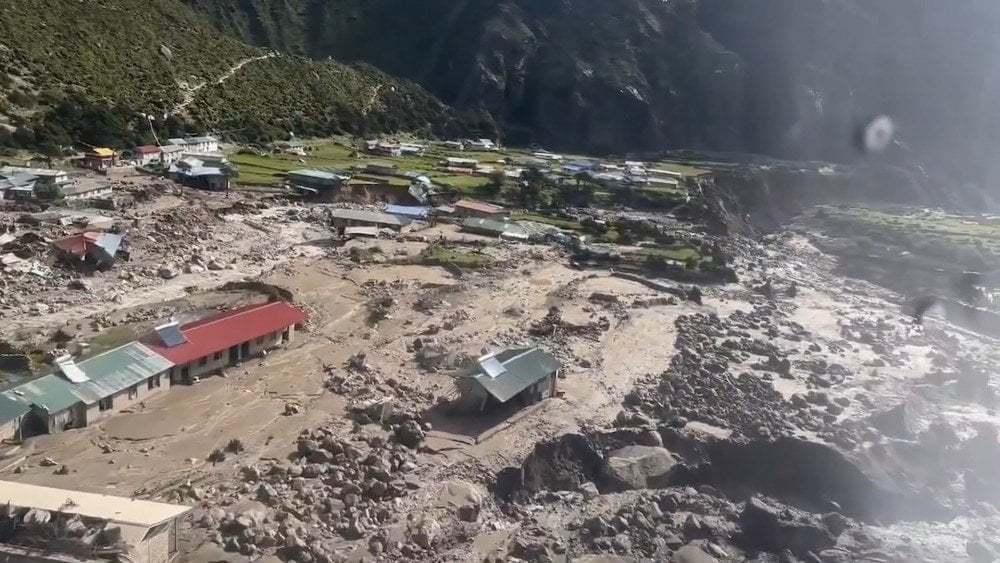
Destroyed by mudflow: the tourist village of Thame, Nepal
Currently, the area is in low tourist season, and the hotels were almost empty. Otherwise, the landslide could have resulted in a large number of casualties.
It is important to note that two other glacial lakes pose potential dangers and could burst at any time.
Russia
On August 18, at 7:10 local time, a powerful earthquake with a magnitude of 7.0 struck Kamchatka, Russia.
According to the Geophysical Service of the Russian Academy of Sciences, the epicenter of the seismic event was located in the Pacific Ocean, 108 km (67 miles) from the regional capital, Petropavlovsk-Kamchatsky. The earthquake’s depth was only 6 km (3.7 miles).
Morning tremors frightened the residents of Kamchatka. People anxiously rushed outside with their belongings. Chandeliers swayed in apartments, dishes broke, and furniture fell.
The shaking was felt in the Yelizovo and Ust-Kamchatsky districts, as well as in the cities of Vilyuchinsk and Petropavlovsk-Kamchatsky.
According to USGS PAGER estimates, up to 3,000 people experienced strong shaking, while 257,000 felt moderate tremors.
The strong earthquake was followed by a series of aftershocks with magnitudes ranging from 3.9 to 5.0.
Almost simultaneously, Shiveluch volcano became active.
On the night of August 18,
a swarm of 389 earthquakes and volcanic lightning were recorded in the volcano’s vicinity.
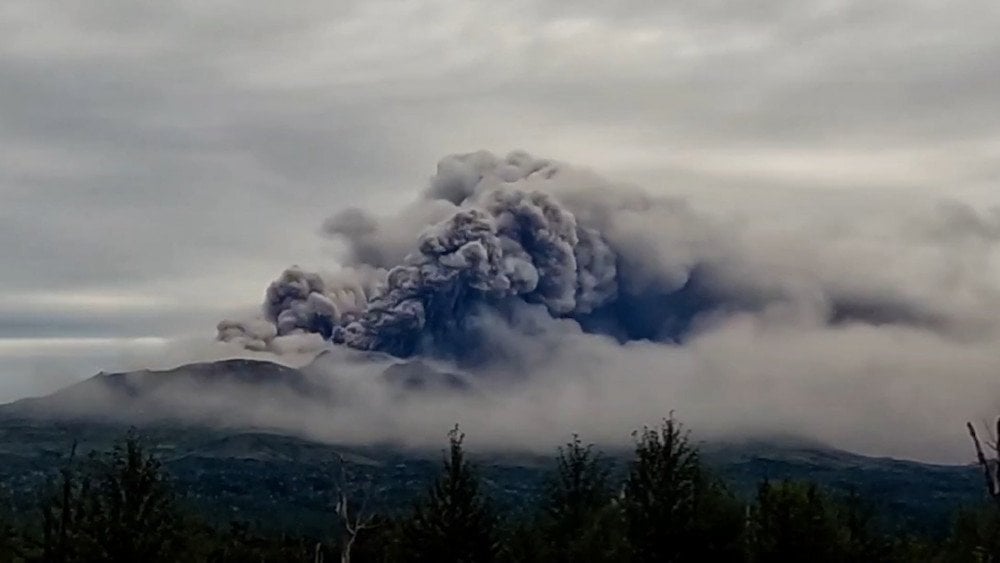
Shiveluch Volcano emits an ash plume, Kamchatka region, Russia
In the morning, the volcano emitted an ash plume reaching a height of 9 km (5.6 miles) above sea level, with a trail extending 492 km (305 miles).
Volcanic ash covered the settlements of Ust-Kamchatsk and Krutoberegovo. A red aviation code was declared in Kamchatka.
Severe rains and floods have brought chaos to several African countries.
Niger
In the Tahoua region of Niger, roads turned into deadly traps. On August 14, on the Talamses–Tahoua highway, two buses with passengers were swept away by floodwaters. Despite desperate attempts by people to save themselves, 52 people died.
The torrents of water also swept away pedestrians heading to the market along the same road. Several people are reported missing.
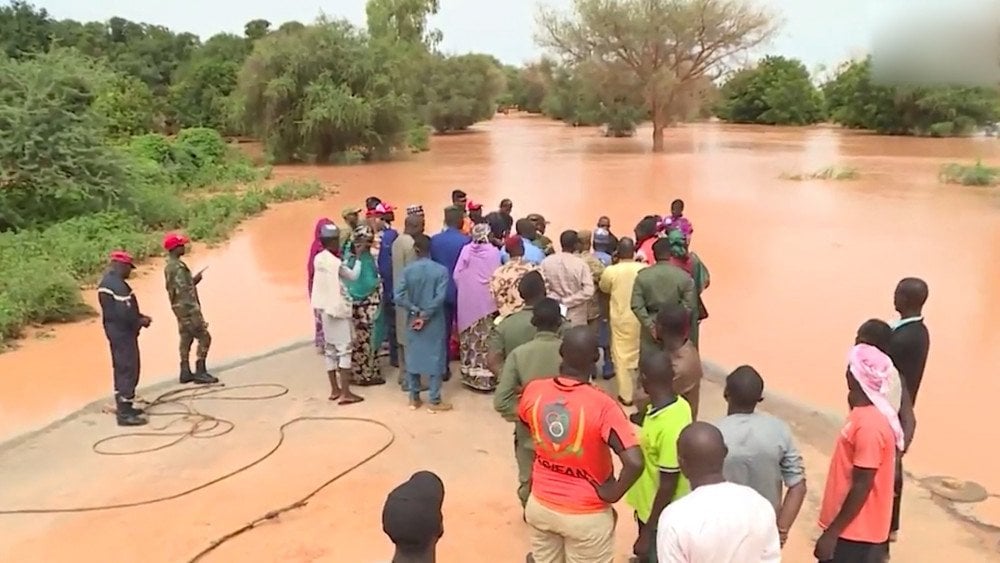
Severe flooding blocks roads, cutting people off from the outside world, Niger
On August 18, roads from Niamey to Dosso, Niamey to Filingue, and Niamey to Kollo were closed. This complicated transportation and access to the capital, as these are the three main routes into Niamey.
In the affected areas, roads were washed out, and crops were destroyed.
Transport companies, Rimbo and Salim, halted operations, and authorities warned that any travel is now a life-threatening risk!
Nigeria
Farmers in Nigeria had barely recovered from the drought when heavy rains hit the usually dry and desert northern region of the country. Ten states have already been affected: Kano, Zamfara, Bauchi, Yobe, Sokoto, Nasarawa, and others. In many of them, the rains have not stopped since the beginning of August.
Floods have destroyed homes, washed away sections of the Kano–Maiduguri Expressway, and flooded agricultural lands.
In Jigawa State, more than 2,700 hectares (6,670 acres) of cereal crops have been destroyed.
According to the State Emergency Management Agency (SEMA) of Bauchi State, 4 people died in the region.

Flooded homes in Bauchi State, Nigeria
Chad
The Tibesti region in Chad experienced an unusually high amount of rainfall. In this arid area, even in August—the wettest month of the year—rainfall typically lasts no more than 2.5 hours per month (the average for August in the region is 5 mm or 0.2 inches).
However, the rains have now continued for a week, leading to widespread flooding and death of 54 people.
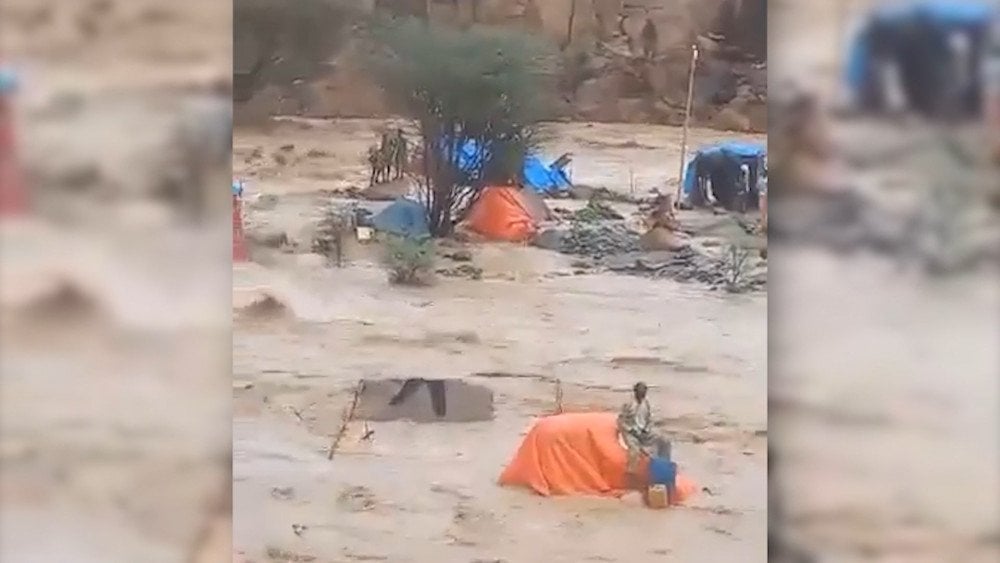
People fleeing the floods in Tibesti region, Chad
As of August 16, six districts of the region were flooded, with thousands of vehicles swept away and 16,200 homes damaged or destroyed. More than 261,000 people were affected.
Powerful storms also struck Europe.
Austria
On August 16, the Austrian state of Tyrol was hit hard. Torrential rains in the town of St. Anton am Arlberg flooded streets and homes, triggered several landslides, and swept at least three cars into the river.
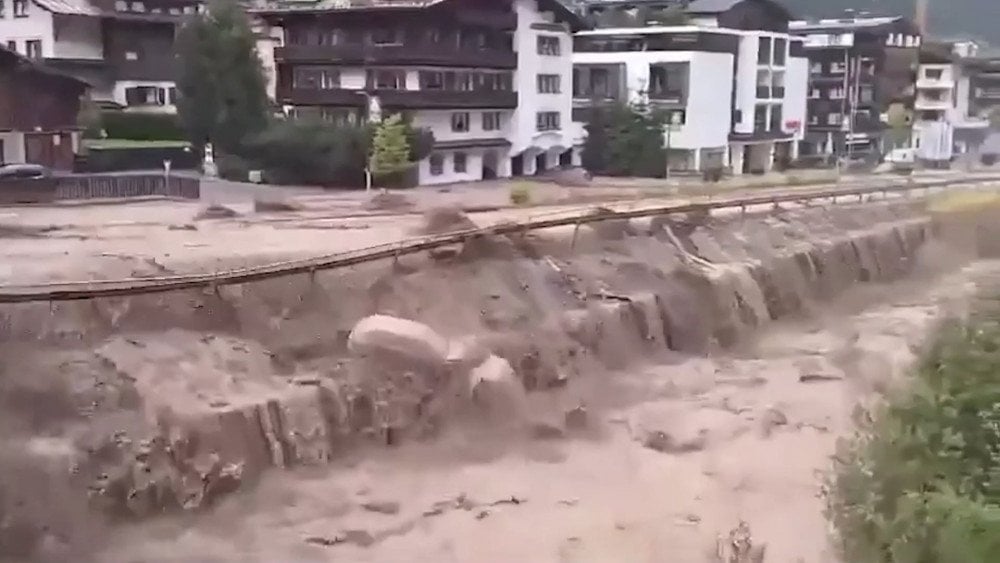
A car swept off the road in the ski resort area of St. Anton, Austria
One of the most important transport routes in the Alps, the Arlberg Pass, was temporarily closed due to a landslide.
In Lower Austria, the section between the districts of Hollabrunn and Göllersdorf a railway embankment was washed away, halting train services.
On August 17, a severe storm with hail and record rainfall hit the northern part of Vienna. 110 mm (4.3 inches) of rain fell—the highest summer rainfall recorded in the 152-year history of meteorological observations in the region.
Streets, roads, and underpasses were flooded, and train services on the city line were disrupted.
Italy
On August 15, very strong winds hit the Liguria region, causing damage to the beach areas of the Italian Riviera. Torn tents, roof tiles, and fallen poles were scattered everywhere. In the city of Ventimiglia, wind speeds reached 141 km/h (87 mph). Several waterspouts also formed in the region.

Waterspouts along the coast of Liguria, Italy
Severe storms struck the Tuscany region of Italy on August 18. In the city of Pitigliano, over 25 mm (1 inch) of rain fell in just 15 minutes, filling narrow streets with water and mud and rendering them impassable. State Road 74 was closed.
Off the coast of Palermo, a storm and the resulting tornado sank the 56-meter (184-foot) superyacht Bayesian. There were 22 people on board, 15 of whom were rescued, while 7 people died.
South Korea
The capital of South Korea faced the longest stretch of tropical nights since meteorological measurements began in 1907.
In Seoul, there were 30 consecutive nights, from July 22 to August 20, when temperatures did not drop below 25°C (77°F).

People escaping the heat, South Korea
A similar situation occurred in Busan, where tropical nights lasted 22 days. Busan's record is the longest in 121 years, since 1904.
The nighttime heat is particularly dangerous as it prevents people and ecosystems from recovering.
On August 17, the annual 10 km “Summer Night Run 2024” in the city of Hanam had to be stopped early due to extreme heat. During the nighttime run, it was so hot that 28 participants were unable to continue. At that time, the temperature in Hanam was 30.1 °C (86.2 °F) with a humidity of 69%, making it feel like 31.3 °C (88.3 °F). Some participants even fainted, and 19 people were hospitalized. Others received assistance on-site.
Since May 20, 2,704 people in South Korea have suffered from heat-related illnesses, and, unfortunately, 23 have died.
According to the International Institute for Environment and Development, the number of days with temperatures of 35°C (95°F) or higher in major world capitals has increased by 52% over the past 30 years.
The months from February to July 2024 set record highs across all statistical indicators.
In 2024, 15 national temperature records and 130 monthly national temperature records were set.
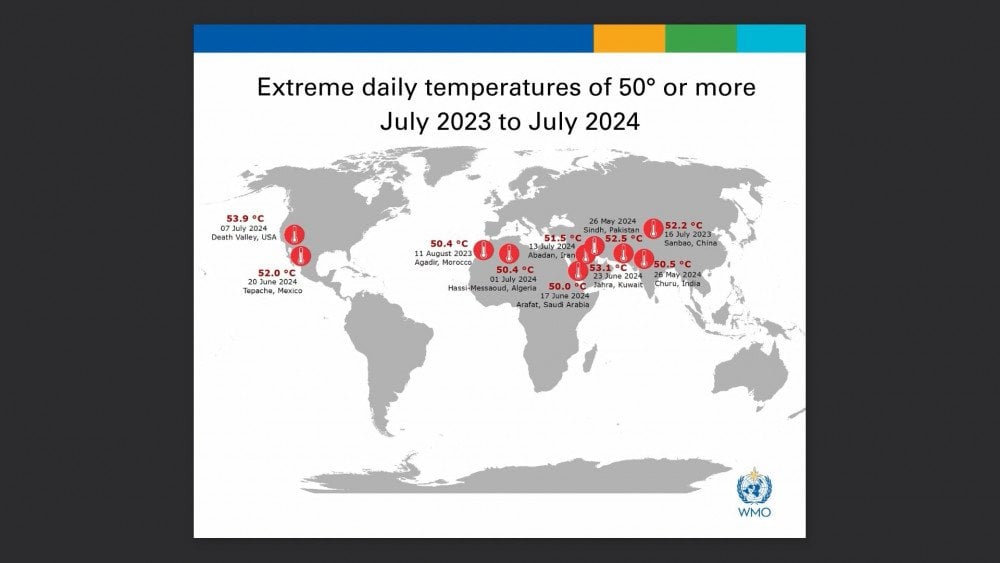
The map shows locations with temperatures of 50°C (122°F) and above from July 2023 to July 2024
According to climatologist Maximiliano Herrera, this amount of extreme heat events is beyond anything ever seen or even thought possible before.
On some days, thousands of records for both daytime and nighttime temperatures were set simultaneously.
This data highlights once again that the progression of extreme weather events is simply staggering. Everyone is now aware of this progression, but some are still afraid to acknowledge the reality, not seeing a way forward and not understanding what humanity can do to counter natural disasters.
People often ask questions like: How can we fight against nature?
There is an answer to this question; otherwise, there would be no point in discussing it. There are true scientists today who understand the causes of these disasters and how to protect against them. These are not just hypotheses or theoretical developments; they are serious and mathematically sound studies. While further research and refinement of these technologies are certainly needed, the foundation for addressing the climate crisis is already in place.
Therefore, the top priority now is to create all the conditions necessary for the work of leading scientists.
If humanity were to invest as much time and resources into scientific development, as it currently spends on opposing each other—would we be able to solve the problem of escalating natural disasters? Definitely yes, we could!
However, the scientists who have the potential to save the world currently lack support and remain largely unknown.
Controlled media will remain silent until the very end, and only ordinary people, by demanding the unification of scientists and the establishment of a Unified Scientific Center, can change the situation and influence the course of events.
You can watch the video version of this article here.
Leave a comment